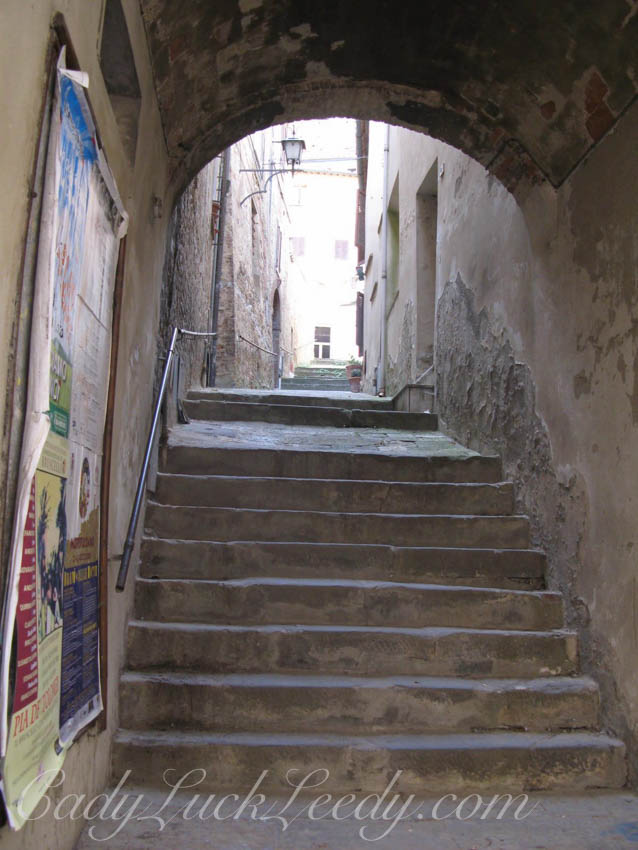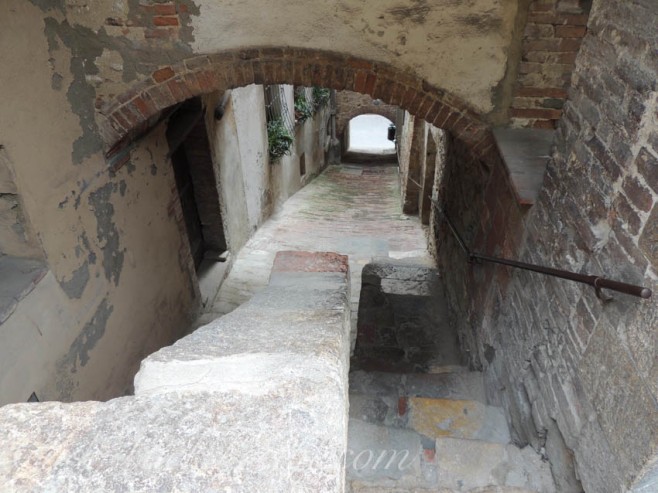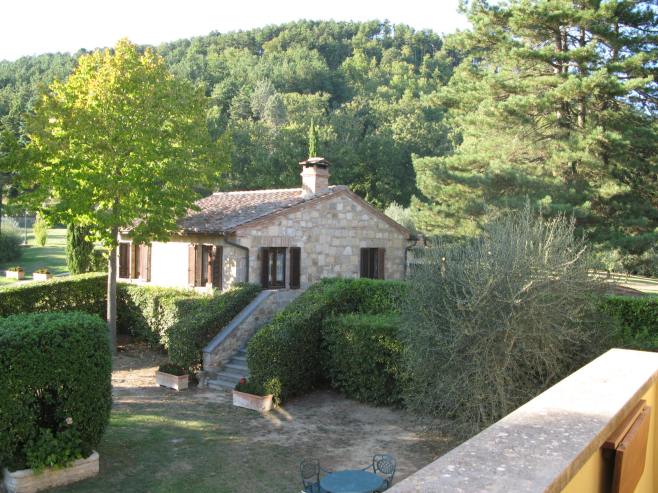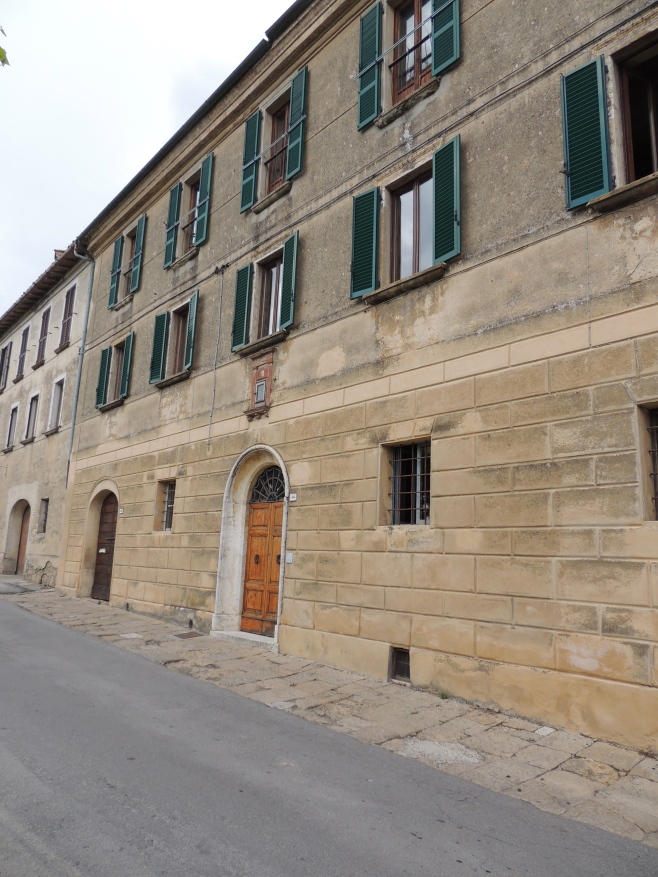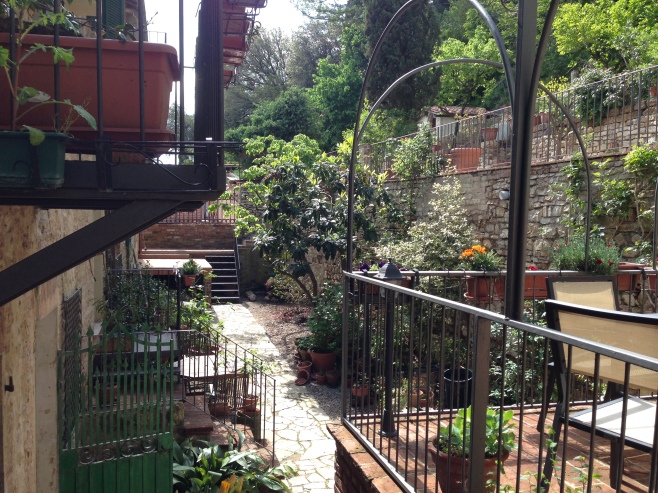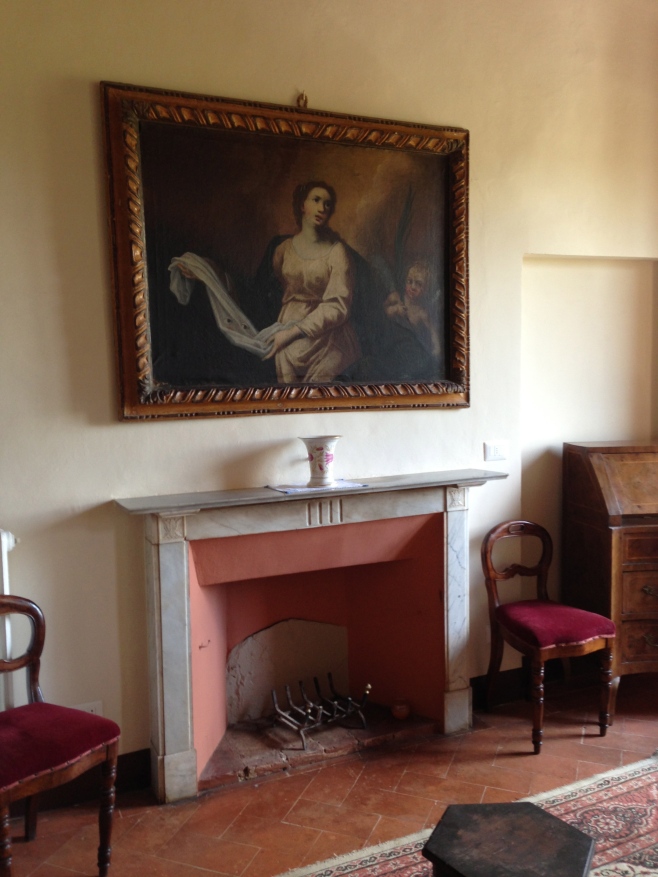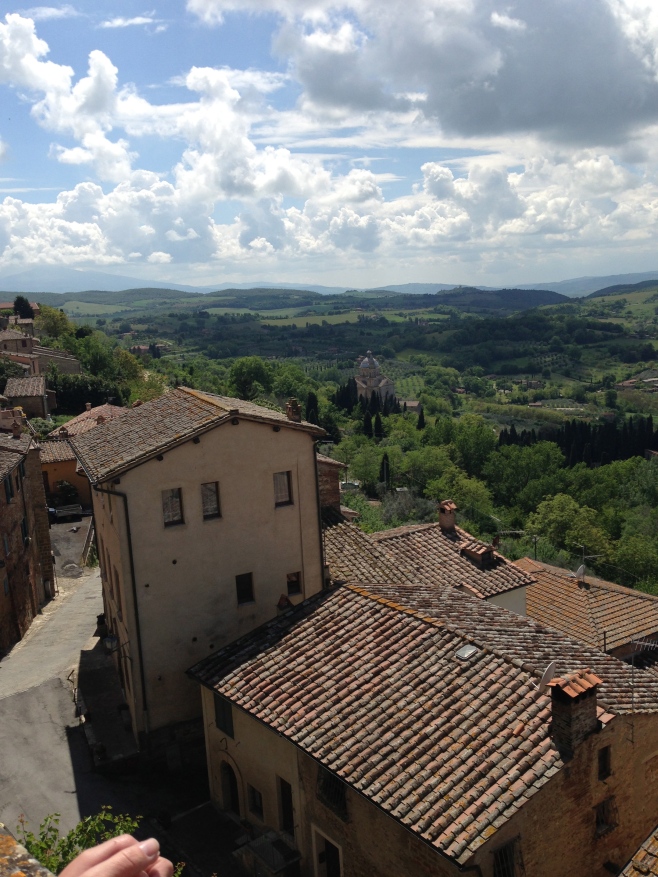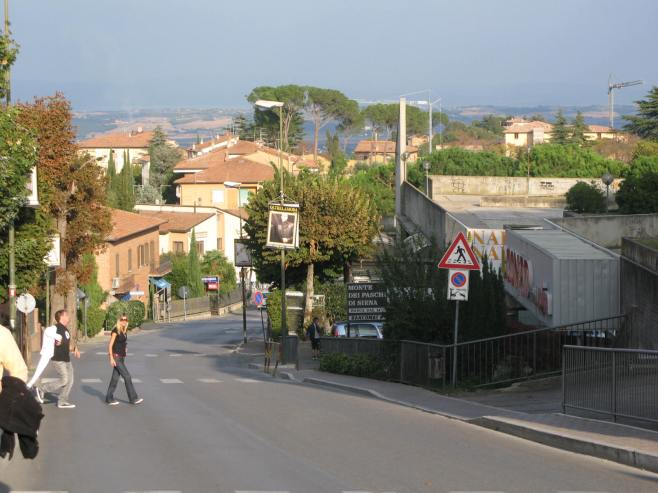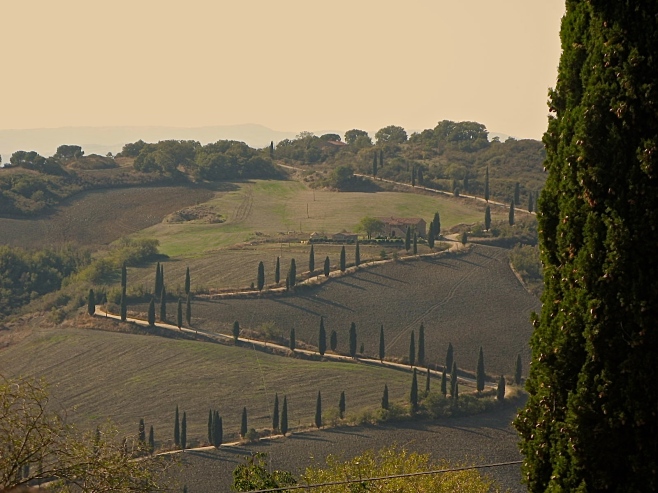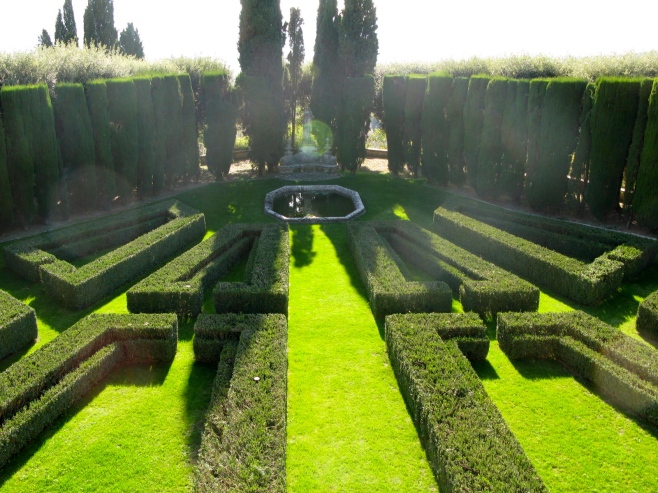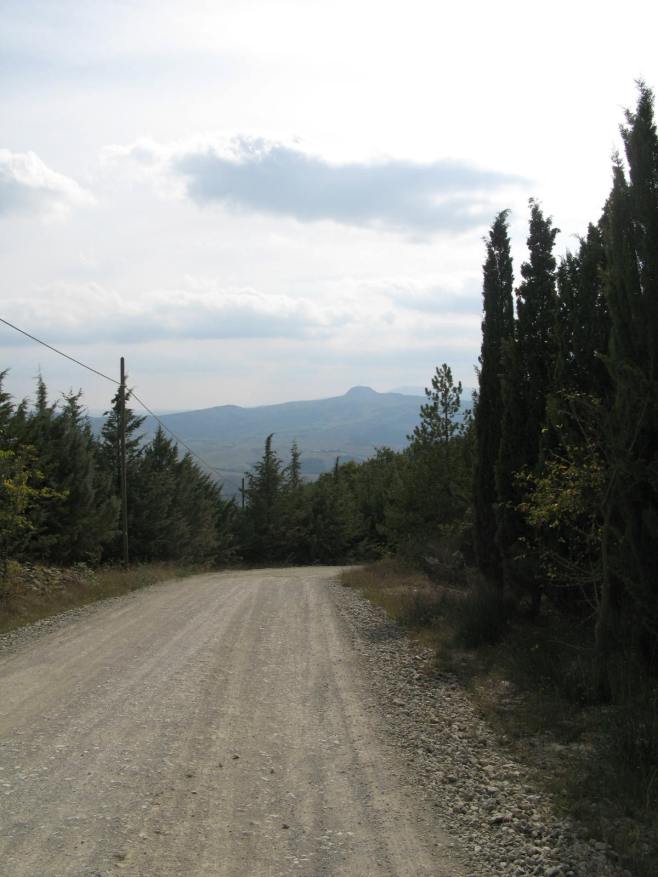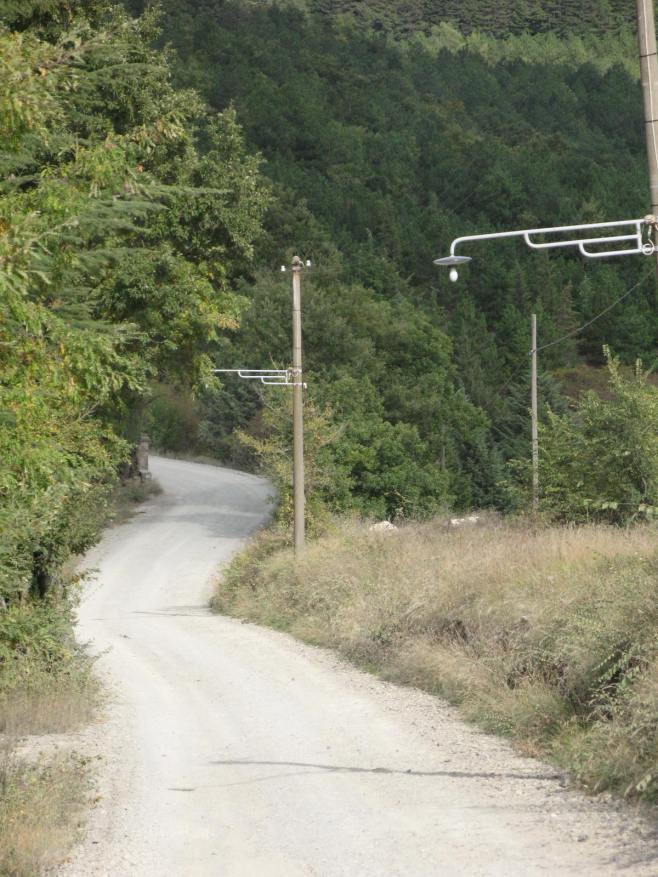
Palazzo Vecchio

Rooftop Sculpture in Florenc

The Window of the World
Thinking about our visit to Florence I can’t get over all the beautiful art we have seen in the Uffizi Gallery, the Pitti Palace, the Duomo Museum and the Accademia. I was especially excited over the artwork of Artemisia Gentileschi, (1593-1653) that SB pointed out to me in the Uffizi Gallery ( Judith Beheading Holofernes) and the Pitti Palace (The Conversion of Magdalena, Judith and Her Maidservant and David and Bathsheba). I first read about Artemisia Gentileschi in a book called, The Passion of Artemisia: a Novel, by Susan Vreeland. Delving into the themes of art, history and the lives of women, this is is a book that I thoroughly enjoyed. Gentileschi painted many pictures of strong and suffering women from myth and the Bible. Her works include victims, suicides, warriors and especially, the Judith story. When you read the book and then see her paintings, her real life and her paintings intertwine and give you perspective of the times and how this woman lived and painted, and why she did so. Even her style of painting called chiaroscuro, which represents a strong contrast between light and dark, gives us a glimpse of her life.
One of Gentileschi’s works, David and Bathsheba, completed in 1635, had been found after centuries of deterioration, in a storage deposit area of the Pitti Palace, revealing decay, color flaking, due to improper storage conditions, and humidity damage. The re-evaluation of the Gentileschi’s courageous life and works were brought into focus with the attention of the Florence Committee of National Museum of Women in the Arts, who decided to fund the restoration of David and Bathsheba. Today, Gentileschi is regarded as the most progressive and expressionist painters of her generation.
Thinking of that book, brought to mind another book, called The Birth of Venus, by Sarah Dunant. This historical novel of Florence is a story of love, art, religion and power as told by Allessandra Cecchi when her father brings a young painter to paint the chapel walls of the family’s pallazzo. This story is told while Florence is caught in a state of turmoil imposed by the fundamentalist monk Savonarola, who is seizing religious and political control and the Medici State, with it’s love of luxury, learning and art. On our walking tours of Florence we learned a great deal about the Medici family and Savonarola. Recalling that book, brought to mind The Lord’s Supper, painted on the wall of the Santa Maria della Grazie Church in Milan, which I have been lucky enough to see.
I was curious to learn how all this beautiful artwork was saved during WWII. Now, I am currently reading, Saving Italy: The Race to Rescue a Nation’s Treasures from the Nazis, by Robert Edsel. In particular I am interested in, General Karl Wolff, a German officer, who risked his life to save the collections of the Uffizi Gallery and the Pitti Palace. Robert Edsel also wrote, The Monuments Men: Allied Heroes, Nazi Thieves, and the Greatest Treasure Hunt in History, now made into a motion picture of the name, The Monuments Men.

Skyline of the Hill Town

The Walled San Gimignano and Porta San Giovani

The Towers of San Gimignano

The Wall Fortifications of San Gimignano
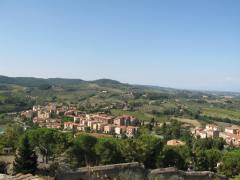
Skyline of San Gimignano

San Gimignano

Defense at the Rocca

The Olive Garden

Layers of Different Bricks

Wall Flowers

The old Buildings

The Loggia

San Gimignano

The Duomo

The Buildings of San Gimignano

Tower in San Gimignano

The Walk Through the Town

One of the Towers

Tower in San Gimignano

The Streets of San Gimignano

San Gimignano

The Fountain

The Old Fountain Outside San Gimignano
San Gimignano, twenty-five miles south of Florence, will be our first stop on our way to Montepulciano, where we will be making our home base for our Tuscany visit.
The parking lot outside the main gate, Porta San Giovanni, was very busy as we approached. The village itself is pedestrian only. Getting in the car parking queue we had to wait for a car to come out before we could go in and take the spot. One in, one out. San Gimignano gives you a glimpse of a real Italian countryside experience, but with just enough shops and restaurants added to make it interesting for tourists. The towers are restored replicas of the original, but they look authentic.
San Gimignano is a small, walled, medieval hill town with fourteen towers of various heights, replicated of the original seventy-two. Before the walls were developed around the town, these towers were a refuge, when ruffians and rival city states were sacking the town. If under attack, the tower owners would set fire to the external wooden staircase, leaving the sole entrance to the house and it’s strongholds, unreachable. Today you can see all these tiny slit entrances way up on the second story of the towers, minus stairs to get to them. Also, notice that the buildings are made of different colored stones and brick. Heavy stones were used for the bottom floors and lighter cheaper bricks for the upper floors. In the year 1300, about 13,000 people lived within the walls. In 1348, a six-month plague left the town with 4,000 survivors. Crushed and demoralized, the town came under Florence’s rule and was forced to tear down it’s towers, and the trade route was re-directed away from San Gimignano. The town never recovered and poverty drove the well-preserved city to be as it is today.
Our walk takes us through the Porta San Giovanni up to the Piazza del Duomo, and the church itself, which features Sienese Gothic art_ Old Testament to the left___New Testament to the right. Further up the hill is the is Sant’Agostino Church, built by the Augustinians, who arrived in 1260. Here there are English speaking friars, who are happy to tell you about the church and their way of life. We stop and have lunch at the Locanda di Sant’Agostino, right next door to the church on a beautiful small piazza. The restaurant serves typical Tuscan home cooked meals, which would be paninos, pizza, pasta and insalatas, served with a local fruity white wine. Walking back down the hill, along the ramparts, there are superb views of the Tuscan countryside. Soon we are inside the Rocca, originally another walled defense area, now a small walled garden of olive trees, where a group of men are singing and playing instruments. I loved our time in San Gimignano, but it is time to move on to Montepulciano. For more interesting history and scenes of Sam Gimignano, view the movie, Tea With Mussolini, a 1999 drama of the plight of American and English expatriate women during WWII. Most of the scenes are of Florence and San Gimignano, where the movie was filmed. In particular it reveals the artworks inside the Duomo of San Gimignano and how the women came to be there and tried to save the art. For more readings about the war and art see my blog postings on Milan, https://cadyluckleedy.com/2014/02/14/one-day-in-milan/ and the War in Val D’ Orcia, https://cadyluckleedy.com/2013/04/11/war-in-val-d-orcia near Montepulciano. See you next in Montepulciano!
0.000000
0.000000


